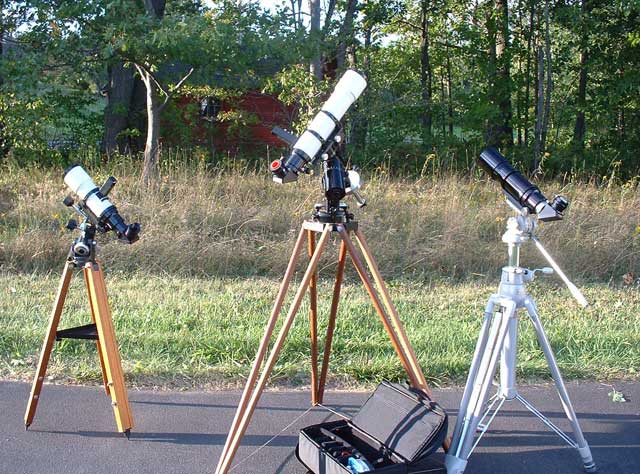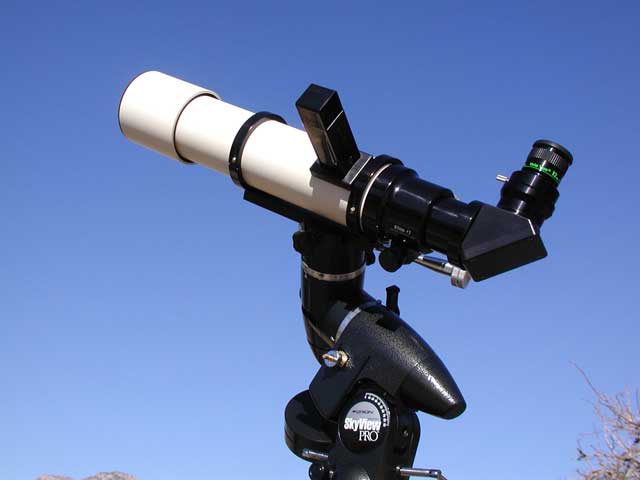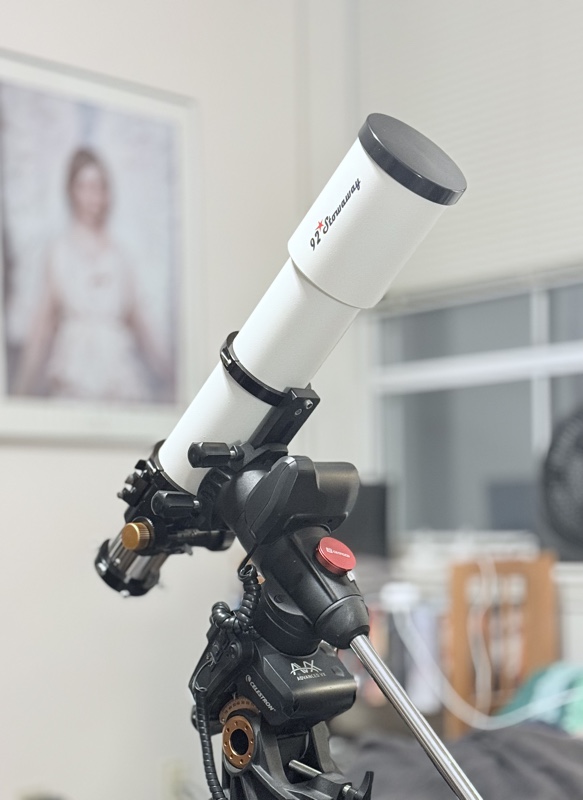
 |
| Three
generations of Stowaways, a sight rarely beheld. From
left to right, f/4.8 version owned by Jim Shearer, f/6.8
version (mine, on Sue French's Astro-Physics 400 mount),
and the prototype "Ur-Stowaway" owned by Alan French. |
 |
| Stowaway
mounted on Orion Skyview Pro mount with Rigel QuikFinder
on tube. |
 |
| First
quarter moon snapped through eyepiece of Stowaway with
digital camera. |
 |
| Iris
Nebula imaged with Stowaway and ZWO ASI294MC Pro camera. |

 |
 |
 |
 |
 |
 |
 |